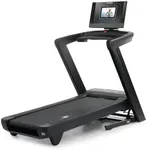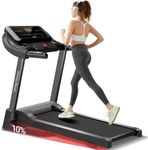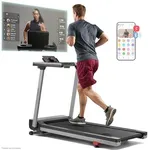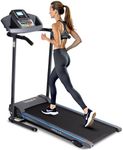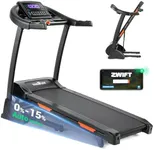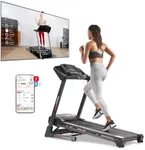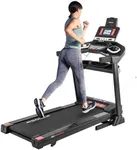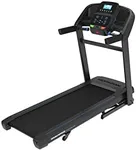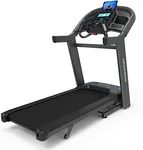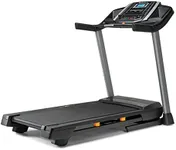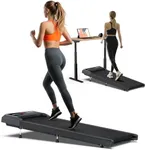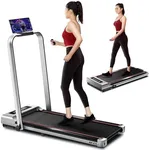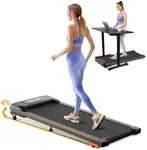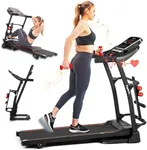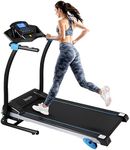Buying Guide for the Best Treadmills With Incline
Choosing the right treadmill with an incline feature can significantly enhance your workout experience, allowing you to simulate uphill running and walking, which can help in burning more calories and building muscle strength. When selecting a treadmill, it's important to consider several key specifications to ensure it meets your fitness goals and personal needs. Here are the key specs to look out for and how to navigate them.Incline RangeThe incline range of a treadmill indicates how steep the treadmill can be adjusted. This is important because a higher incline can provide a more intense workout, simulating uphill running or walking. Incline ranges typically vary from 0% to 15% or more. For beginners or those looking for moderate workouts, a range of up to 10% may be sufficient. For more advanced users or those seeking a more challenging workout, a range of 15% or higher is ideal. Consider your fitness level and goals when choosing the incline range.
Motor PowerMotor power, measured in horsepower (HP), determines how smoothly and efficiently the treadmill operates, especially at higher inclines. A stronger motor is essential for maintaining consistent speed and performance. Treadmills usually have motors ranging from 1.5 HP to 4.0 HP. For walking or light jogging, a motor with 1.5 to 2.5 HP may be adequate. For running or frequent use at higher inclines, look for a motor with 3.0 HP or more. Your workout intensity and frequency should guide your choice.
Running SurfaceThe running surface, or belt size, is the area where you run or walk. This is crucial for comfort and safety, especially when using the incline feature. A larger running surface provides more space to move, reducing the risk of stepping off the belt. Standard sizes range from 16" x 50" to 22" x 60". For walking or light jogging, a smaller surface may suffice. For running or if you have a longer stride, opt for a larger surface. Consider your height and stride length when choosing the running surface.
CushioningCushioning refers to the shock absorption system of the treadmill, which can reduce the impact on your joints. This is particularly important when using the incline feature, as the impact can be greater. Treadmills with good cushioning can help prevent injuries and provide a more comfortable workout. Look for treadmills that offer adjustable cushioning or have a reputation for excellent shock absorption. If you have joint issues or plan to use the treadmill frequently, prioritize models with superior cushioning.
Speed RangeThe speed range of a treadmill indicates how fast the belt can move. This is important for varying your workout intensity. Speed ranges typically go from 0.5 mph to 12 mph or more. For walking or light jogging, a maximum speed of 8 mph may be sufficient. For running or high-intensity interval training (HIIT), look for a treadmill with a higher maximum speed, such as 10 mph or more. Your fitness goals and workout preferences should guide your choice of speed range.
Programs and FeaturesMany treadmills come with pre-set workout programs and additional features like heart rate monitors, Bluetooth connectivity, and interactive training apps. These can enhance your workout experience and help you stay motivated. Consider what features are important to you. If you enjoy guided workouts, look for treadmills with a variety of programs or compatibility with fitness apps. If tracking your progress is important, ensure the treadmill has accurate monitoring features. Choose features that align with your fitness goals and preferences.
Weight CapacityThe weight capacity of a treadmill indicates the maximum user weight it can safely support. This is important for ensuring the treadmill's durability and your safety. Treadmills typically have weight capacities ranging from 250 lbs to 400 lbs. Choose a treadmill with a weight capacity that exceeds your body weight to ensure stability and longevity. If multiple users will be using the treadmill, consider the heaviest user when making your selection.
Foldability and StorageFoldability refers to the treadmill's ability to fold up for easy storage. This is important if you have limited space. Some treadmills are designed to be compact and easily stored when not in use. If space is a concern, look for a treadmill with a foldable design and easy-to-use folding mechanism. Consider the dimensions of the treadmill when folded and ensure it fits in your storage area. Your available space and storage needs should guide your choice.
